Mounted UV Fused Silica Plano-Convex Lenses, Uncoated
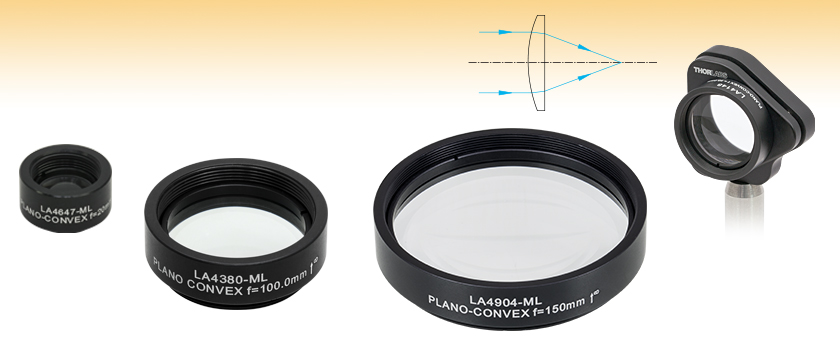
- Wavelength Range: 185 nm - 2.1 µm
- Zemax Files Available
- Ø1/2", Ø1", Ø2", or Ø75 mm Optics in SM-Threaded Mounts
LA4647-ML
(Ø1/2")
LA4380-ML
(Ø1")
LA4148-ML
Mounted in a KB1P
Quick-Release Mount
(Mount Sold Separately)
LA4904-ML
(Ø2")

Please Wait
| UV Fused Silica Plano-Convex Lenses, Uncoated | |
|---|---|
| Lens Shape | Plano-Convex |
| Material | UV-Grade Fused Silicaa |
| Wavelength Range | 185 nm - 2.1 μm |
| Diameters Available | Ø1/2" in SM05-Threaded Mount (0.535"-40) Ø1" in SM1-Threaded Mount (1.035"-40) Ø2" in SM2-Threaded Mount (2.035"-40) Ø75 mm in SM3-Threaded Mount (3.035"-40) |
| Diameter Tolerance | +0.00 mm / -0.10 mm |
| Clear Aperture | Ø1/2" Lenses: >Ø11.05 mm Ø1" Lenses: >Ø22.86 mm Ø2" Lenses: >Ø45.72 mm Ø75 mm Lenses: >Ø67.50 mm |
| Design Wavelength | 546 nmb |
| Index of Refraction (@ 546 nm) |
1.460 |
| Surface Quality | 40-20 Scratch-Dig |
| Surface Flatness (Plano Side) |
λ/2 |
| Spherical Surface Power (Convex Side)c |
3λ/2 |
| Surface Irregularity (Peak to Valley) |
λ/4 |
| Centration | ≤3 arcmin |
| Focal Length Tolerance | ±1% |
| Click on the red Document icon next to the item numbers below to access the Zemax file download. Our entire Zemax Catalog is also available. |
Features
- Ø1/2", Ø1", Ø2", and Ø75 mm Lenses Available in SM-Threaded Mounts
- UV-Grade Fused Silica
- Wavelength Range: 185 nm - 2.1 μm (Uncoated)
- Focal Lengths Available from 20.0 - 1000.0 mm
These UV Grade Fused Silica Plano-Convex lenses, which are available in Ø1/2", Ø1", Ø2", and Ø75 mm sizes in threaded mounts, have a wavelength range of 185 nm - 2.1 μm. UV-grade fused silica offers high transmission in the deep UV and exhibits virtually no laser-induced fluorescence (as measured at 193 nm), making it an ideal choice for applications from the UV to the near IR. In addition, UV fused silica has better homogeneity and a lower coefficient of thermal expansion than N-BK7.
Plano-convex lenses have positive focal lengths and are the most popular type of lens element. They are commonly used to focus a collimated incident beam; in such cases the collimated light source should be incident on the curved surface to minimize spherical aberrations. When image quality is not critical, plano-convex lenses can also be used as a substitute for achromatic doublets.
When deciding between a plano-convex lens and a bi-convex lens, both of which cause collimated incident light to converge, it is usually preferrable to choose a plano-convex lens if the desired absolute magnification is either less than 0.2 or greater than 5. Between these two values, bi-convex lenses are generally preferred.
Custom Coatings are also available. Please contact Tech Sales for a quote.
| Quick Links to Other Spherical Singlets | ||||||
|---|---|---|---|---|---|---|
| Plano-Convex | Bi-Convex | Best Form | Plano-Concave | Bi-Concave | Positive Meniscus | Negative Meniscus |
Below is the transmission curve for a 10 mm thick uncoated sample of UV fused silica when the incident light is normal to the surface. Please note that this is the measured transmission, including surface reflections.
| UVFS Plano-Convex Lens Selection Guide | |
|---|---|
| Unmounted Lenses | Mounted Lenses |
| Uncoated | Uncoated |
| -UV Coating (245 - 400 nm) | -UV Coating (245 - 400 nm) |
| -A Coating (350 - 700 nm) | -A Coating (350 - 700 nm) |
| -AB Coating (400 - 1100 nm) | - |
| -B Coating (650 - 1050 nm) | -B Coating (650 - 1050 nm) |
| -C Coating (1050 - 1700 nm) | -C Coating (1050 - 1700 nm) |
| -YAG V-Coating (532/1064 nm) | -YAG V-Coating (532/1064 nm) |
| -405 V-Coating (405 nm) | - |
| -532 V-Coating (532 nm) | - |
| -633 V-Coating (633 nm) | - |
| -1064 V-Coating (1064 nm) | - |
| -1550 V-Coating (1550 nm) | - |
The lenses sold on this page are also available with broadband antireflective coatings, the reflectance traces of which are shown in the graph below.
These high-performance multilayer AR coatings have an average reflectance of less than 0.5% (per surface) across the specified wavelength ranges and provide good performance for angles of incidence (AOI) between 0° and 30° (0.5 NA). The plot shown below indicates the performance of the standard coatings in this family as a function of wavelength. Broadband coatings have a typical absorption of 0.25%, which is not shown in the reflectance plots.
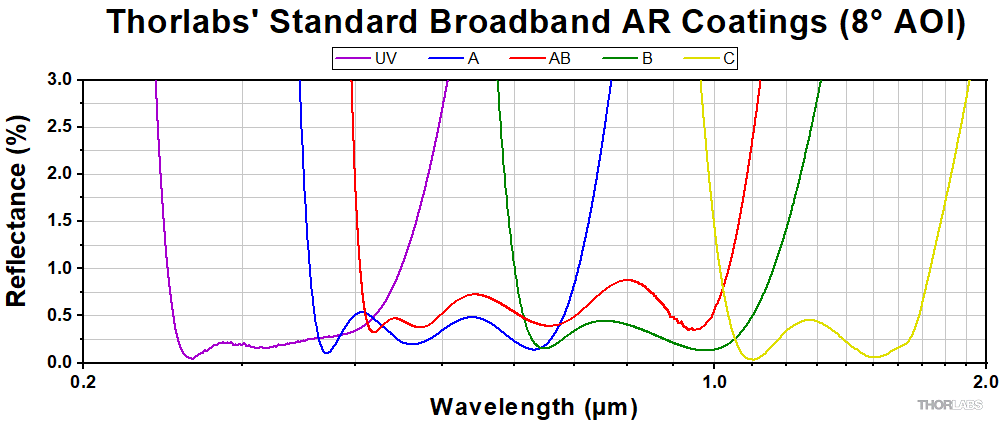
| Posted Comments: | |
yaoming_shen
(posted 2015-03-03 09:20:45.073) I can not find the Zemax file. Can you please send me a copy? Thanks. My email address is yaoming_shen@amat.com myanakas
(posted 2015-03-05 08:42:48.0) Response from Mike at Thorlabs: Thank you for your feedback. We have uploaded the Zemax files for these lenses. They can be found by clicking on the red "Docs" icon next to the blue item number. I have also contacted you directly with the files. |




 Products Home
Products Home









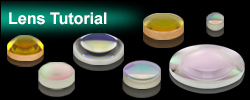

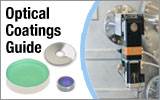
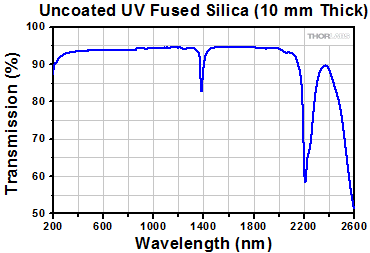
 UVFS, Mounted, Uncoated
UVFS, Mounted, Uncoated